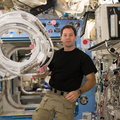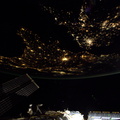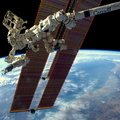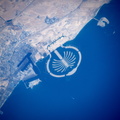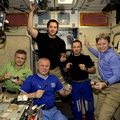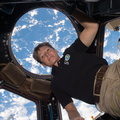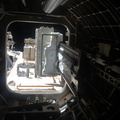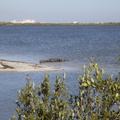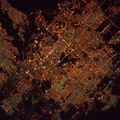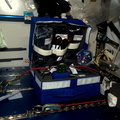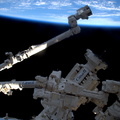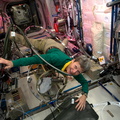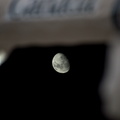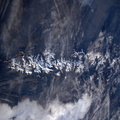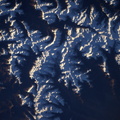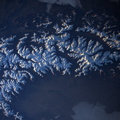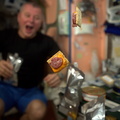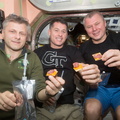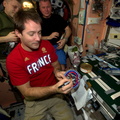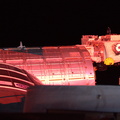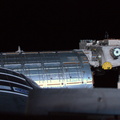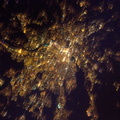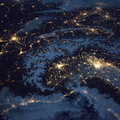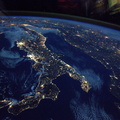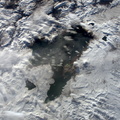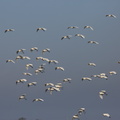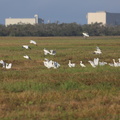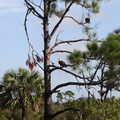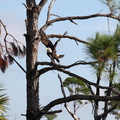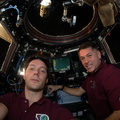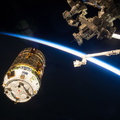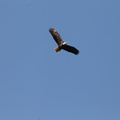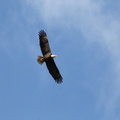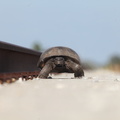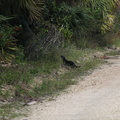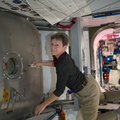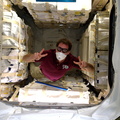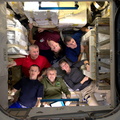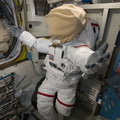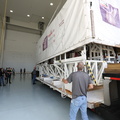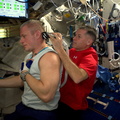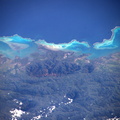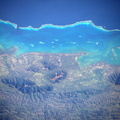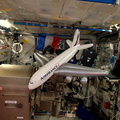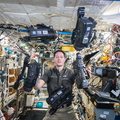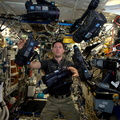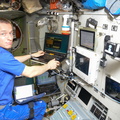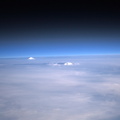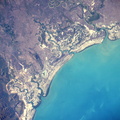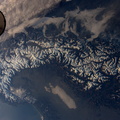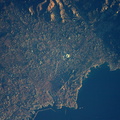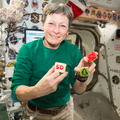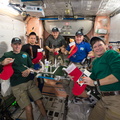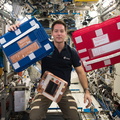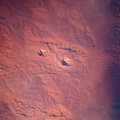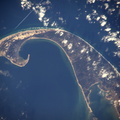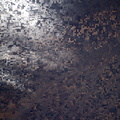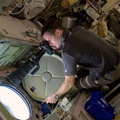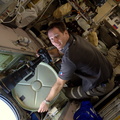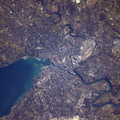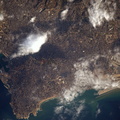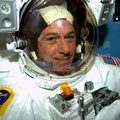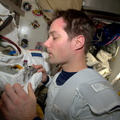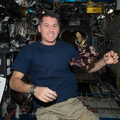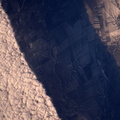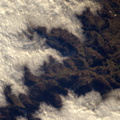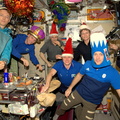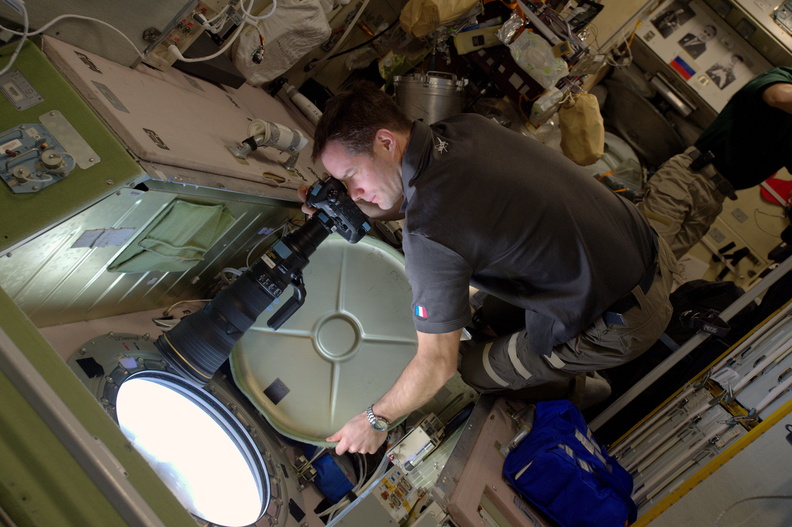
WIKIARCHIVES.SPACE
The Human Spaceflight Archive

Proxima was the name given to ESA astronaut Thomas Pesquet’s six-month mission on the International Space Station. He worked on the weightless research laboratory and ran scientific experiments for hundreds of researchers on Earth. Thomas left our planet on 17 November 2016 from Baikonur cosmodrome in Kazakhstan on a Soyuz rocket with NASA astronaut Peggy Whitson and commander-cosmonaut Oleg Novitsky and returned to Earth on 15 May 2017. This image was taken on 28/12/2016 by Thomas Pesquet during the Proxima mission and was published on social media with the following comments in English and French. "People have been asking how we take all our pictures: we have lots of cameras on the International Space Station, and an awesome view. On the weekend, we use navigation software to know our position precisely, and look out of the window at the right time. You can predict passes over a specific location (say, Paris for example) and… hope the weather will be good: clouds mean no picture at all. Our still cameras are Nikon D4s, and we have a variety of lenses, from the 8mm – for inside small modules – to the 800mm with an x1.4 teleconverter, which is our largest zoom and my weapon of choice lately. We fly so fast that passes are short, and you have to compensate for the motion of the Space Station to get sharp shots. There is plenty of opportunity for being creative: timelapses, night photography, etc." "Vous êtes nombreux à demander comment on prend nos photos. Pour commencer, il y a beaucoup d’appareils à bord de la Station spatiale et surtout on a un observatoire privilégié à disposition : la Cupola et sa vue sans égale sur la Terre. Les weekends, on a le temps de photographier la planète et on s’aide pour cela d’un logiciel de navigation. Il connaît notre position exacte et nous indique à quelle heure exacte il nous faut regarder par le hublot pour ne pas manquer notre cible. On peut prédire le moment exact où la Station va survoler telle ou telle lieu (Paris, par exemple) et il n’y a alors plus qu’à espérer que le beau temps soit au rendez-vous : on ne voit rien sans un ciel dégagé. Nos appareils photo sont des Nikon D4S et on peut choisir différents objectifs, entre le 8 mm (pour photographier l’intérieur de petits modules) au 800 mm et son téléconvertisseur 1.4. C’est le plus puissant et mon arme de prédilection ces derniers temps. La Station vole tellement vite qu’il n’y a pas beaucoup de temps à chaque passage pour dégainer l’appareil photo et il fait également compenser le déplacement de l’ISS pour obtenir une image nette. Une fois ces subtilités maîtrisées, il y a de quoi être créatif : time-lapse, photo de nuit, etc"
Information
- Taken in
- Space
- Author
- ESA
- Description
-
Proxima was the name given to ESA astronaut Thomas Pesquet’s six-month mission on the International Space Station. He worked on the weightless research laboratory and ran scientific experiments for hundreds of researchers on Earth. Thomas left our planet on 17 November 2016 from Baikonur cosmodrome in Kazakhstan on a Soyuz rocket with NASA astronaut Peggy Whitson and commander-cosmonaut Oleg Novitsky and returned to Earth on 15 May 2017. This image was taken on 28/12/2016 by Thomas Pesquet during the Proxima mission and was published on social media with the following comments in English and French. "People have been asking how we take all our pictures: we have lots of cameras on the International Space Station, and an awesome view. On the weekend, we use navigation software to know our position precisely, and look out of the window at the right time. You can predict passes over a specific location (say, Paris for example) and… hope the weather will be good: clouds mean no picture at all. Our still cameras are Nikon D4s, and we have a variety of lenses, from the 8mm – for inside small modules – to the 800mm with an x1.4 teleconverter, which is our largest zoom and my weapon of choice lately. We fly so fast that passes are short, and you have to compensate for the motion of the Space Station to get sharp shots. There is plenty of opportunity for being creative: timelapses, night photography, etc." "Vous êtes nombreux à demander comment on prend nos photos. Pour commencer, il y a beaucoup d’appareils à bord de la Station spatiale et surtout on a un observatoire privilégié à disposition : la Cupola et sa vue sans égale sur la Terre. Les weekends, on a le temps de photographier la planète et on s’aide pour cela d’un logiciel de navigation. Il connaît notre position exacte et nous indique à quelle heure exacte il nous faut regarder par le hublot pour ne pas manquer notre cible. On peut prédire le moment exact où la Station va survoler telle ou telle lieu (Paris, par exemple) et il n’y a alors plus qu’à espérer que le beau temps soit au rendez-vous : on ne voit rien sans un ciel dégagé. Nos appareils photo sont des Nikon D4S et on peut choisir différents objectifs, entre le 8 mm (pour photographier l’intérieur de petits modules) au 800 mm et son téléconvertisseur 1.4. C’est le plus puissant et mon arme de prédilection ces derniers temps. La Station vole tellement vite qu’il n’y a pas beaucoup de temps à chaque passage pour dégainer l’appareil photo et il fait également compenser le déplacement de l’ISS pour obtenir une image nette. Une fois ces subtilités maîtrisées, il y a de quoi être créatif : time-lapse, photo de nuit, etc"
- Created on
- Wednesday 28 December 2016
- Albums
- ISS (WIP) / EXPEDITIONS / EXPEDITION 50
- Source link
- https://www.flickr.com/photos/thom_astro/albums/72157713727843823
- Visits
- 22
- Rating score
- no rate
- Rate this photo
- License
- CC BY-SA 3.0 IGO
- Modified by WikiArchives
- No (original)
- Downloads
- 2
EXIF Metadata
NIKON CORPORATION NIKON D4
- Make
- NIKON CORPORATION
- Model
- NIKON D4
- DateTimeOriginal
- 2016:12:28 12:32:42
- ApertureFNumber
- f/6.3
Powered by Piwigo
